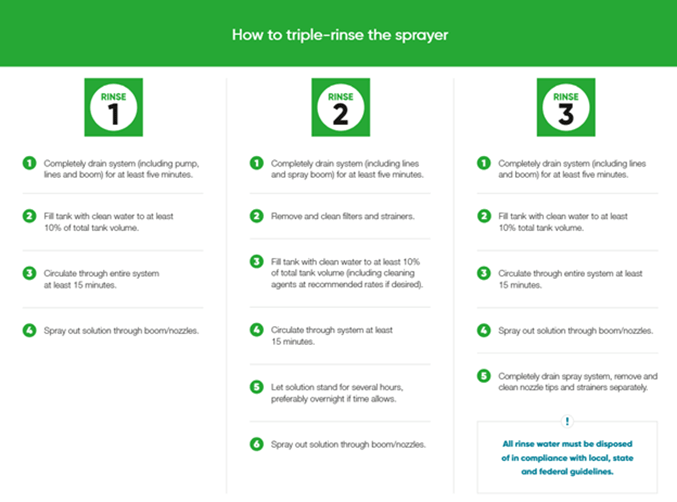Sprayer Tank Cleanout
BY Dairyland Seed Agronomy Team
As post-emergence herbicide applications are beginning to take place, it is a good reminder to make sure proper cleanout is being done. Modern herbicides are designed to work at low rates and even small amounts left behind can significantly injure a crop, especially if that crop is currently under stress.
Here are some tips to ensure proper tank cleanout and avoid tank contamination:
- Always plan to spray out the load and clean equipment as soon as possible. If the product sits in the tank and boom for an extended time, residue can build up. Dried herbicide residue is more difficult to remove.
- Make sure the sprayer receives a thorough cleaning when switching crops or switching from pre-emergence applications to post-emergence applications. Frequent rinsing and cleaning will also help prevent residue accumulation.
- When cleaning out the sprayer, make sure to clean all parts. This includes the tank, lines, filters/screens, pumps, end caps and nozzles. Residue can be stuck on the side of the tank or linger in the lines and filters. Pay special attention to hose bends and end caps as residue accumulation is very common in those spots. Also be aware that rubber hoses are more likely to trap residue than plastic hoses.
- Don’t forget to rinse and clean chemical inductors. Product tends to accumulate in the bottom of inductors so that should be rinsed and cleaned.
- Always check the label for directions on the best cleaning method and cleaning agent to use. There are several cleaning agents available, and each have different use instructions so be sure to consult the labels.
Below is a quick reminder on the general cleanout procedure. If you have any questions, feel free to reach out to your local DSM or Agronomist for more information.


Brian Weller
Western Region
507.456.3034

Rod Moran
Western Region
507.456.3034

Dan Ritter
Central Region
219.863.0583

Branden Furseth
Northern Region
608.513.4265

Mark Gibson
Eastern Region
260.330.8968

Amanda Goffnett
Eastern Region
989.400.3793

Ryan Mueller
Eastern Region
989.400.3793
